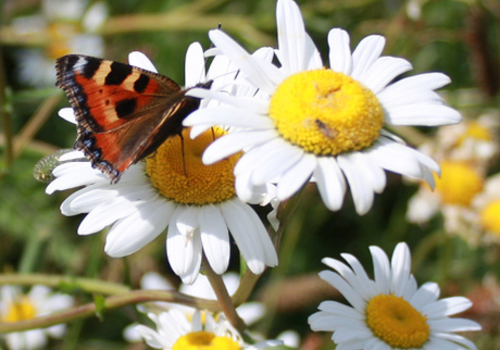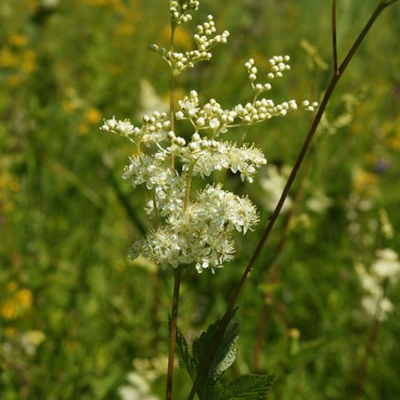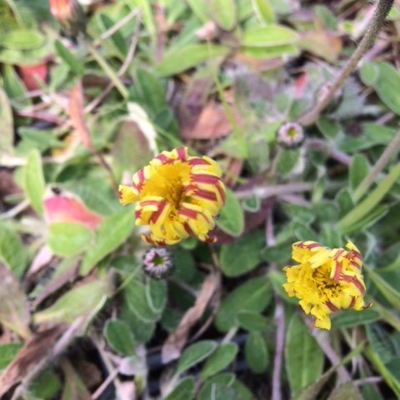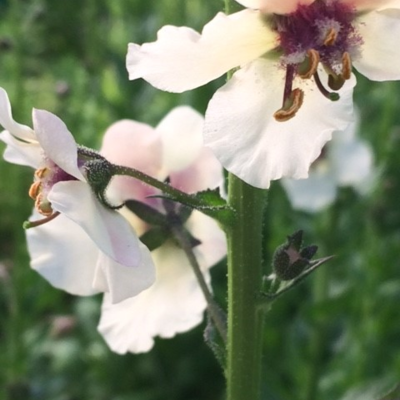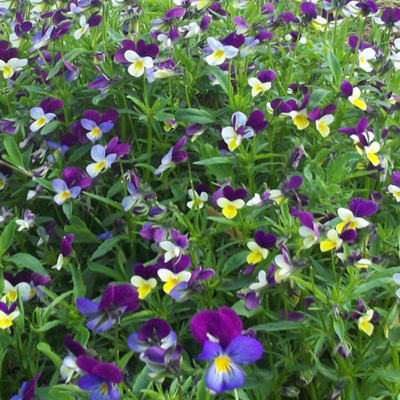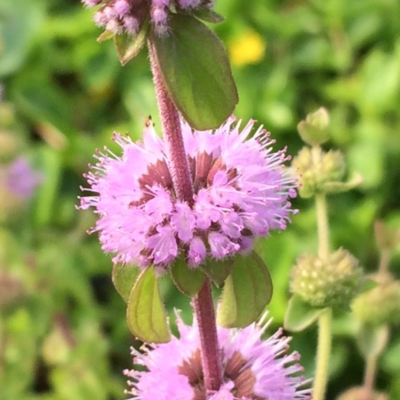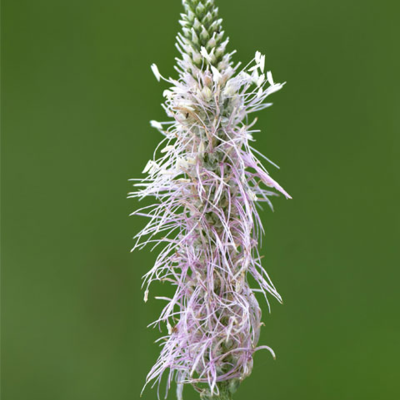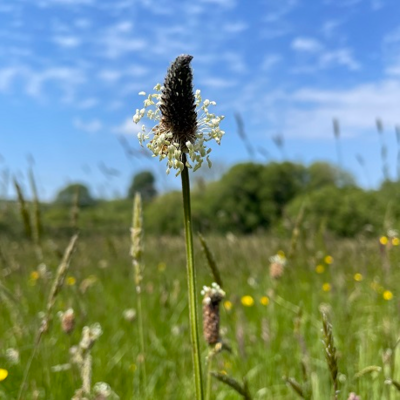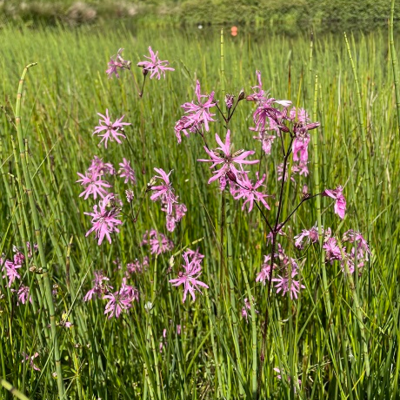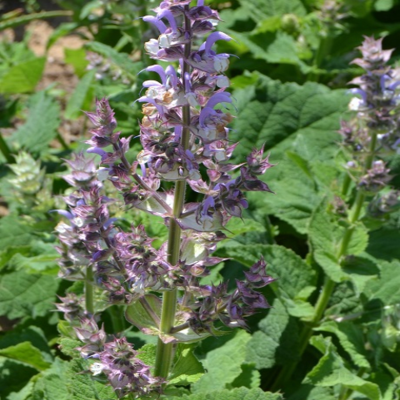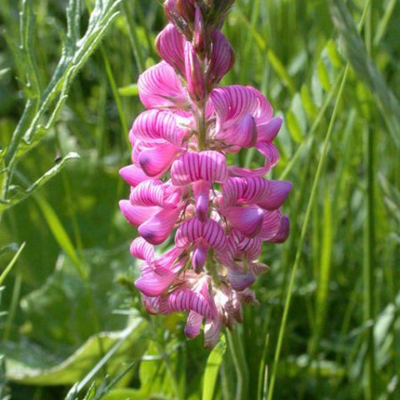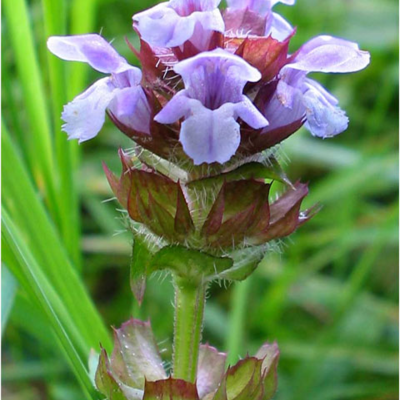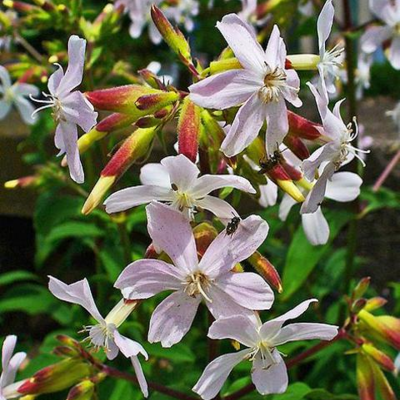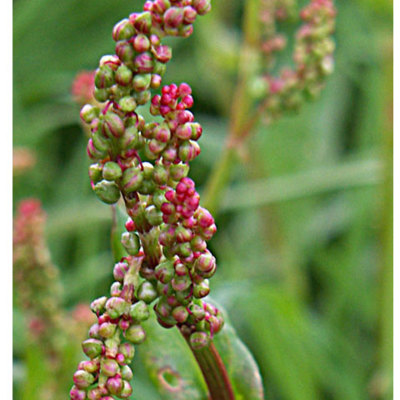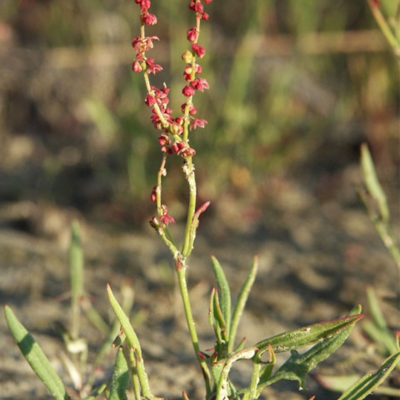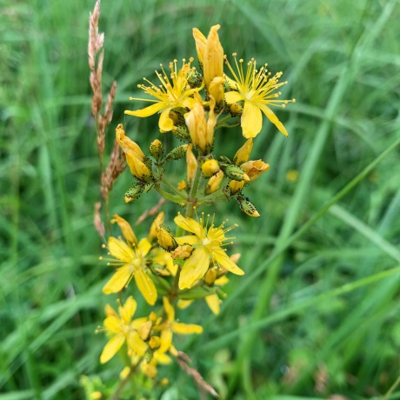Wildflower Plants A to Z
Choose from our entire range of over 100 wildflower plug plants, expertly grown in our very own nursery from high quality, UK native wildflower seed. Our wildflower plugs are ready to be planted straight out into your garden or meadow as soon as they arrive, all year round. Buying individual wildflower plants is one of the best ways to establish your chosen wildflower species, planted individually or as part of a more diverse meadow created from our range of wildflower seeds.
Don't hesitate to get in touch to speak to one of our experts or request a catalogue to view our full range. Ordering regularly or looking for large volumes? Click here to apply for a trade account today - we review all applications within one working day.
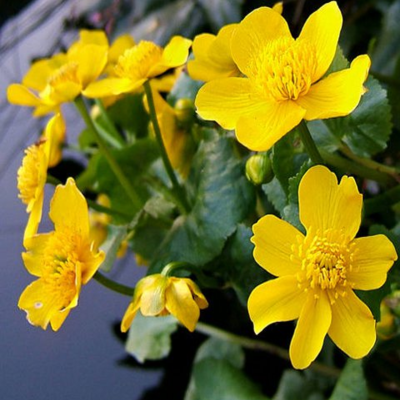

Plants for Pollinators highlights plants selected by the RHS as scientifically proven to tackle the declines in bees, butterflies and other pollinators.
Marigolds are always a lovely choice for the garden- even in loamy soil. The simple-yet-stunning beauty of these clusters of heart-shaped leaves and beaming golden flowers goes without saying- what’s more, they’re hardy, nectar-rich and even considered to be good luck in some parts of the country. Best placed in a sunny spot where they’ll give off a gorgeous glow!
- Type: Perennial
- Height: 25-50cm.
- Flowers: March-August
- Soil Requirement: Moist
- Light Requirement: Full sun
- Natural Habitat: Marshes, coast lines, river banks
- Also known as: Goldings, Kingcup, Publican’s Coat
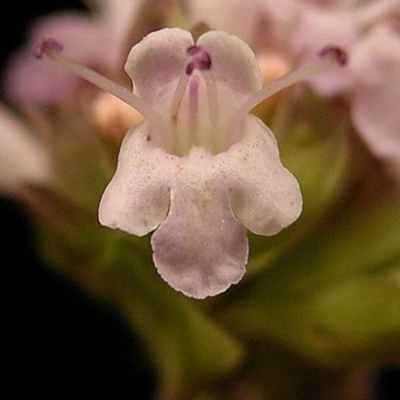

Plants for Pollinators highlights plants selected by the RHS as scientifically proven to tackle the declines in bees, butterflies and other pollinators.
Best known as a common culinary herb, the Wild Marjoram has an extra use in providing some fanciful flavour to your garden! Not only does it provide fragrant foliage, but its small, spiked stems also produce clusters of small, rich Byzantine purple buds, blooming into paler pink petals, providing an interesting mixed palette that can compliment both light and dark flower arrangements!
- Type: Perennial
- Height: 30-60cm.
- Flowers: July-September
- Soil Requirement: Well-drained
- Light Requirement: Full sun
- Natural Habitat: Grasslands, farmland, chalky soil
- Also known as: Oregano, Grove Marjoram, Wintersweet
The frothy formations of this cream-coloured flower are a truly sugary-sweet sight for the eyes- among other senses, as this tall and robust plant is also renowned for its sweet scent, and it’s frequently used as a flavouring, too. For those caring for marshy meadows, Meadowsweet is a perfect treat!
- Type: Perennial
- Height: 60-120cm.
- Flowers: June-September
- Best Sown: Autumn or Spring
- Soil Requirement: Moist
- Light Requirement: Full sun or partial shade
- Natural Habitat: River banks, damp meadows
- Also known as: Bridewort, Honey-Sweet, Meadow Queen
The citrus yellow petals of the Mouse-Ear Hawkweed's florets give it a ragged resembance to its relative, the Common Dandelion, they can be easily told apart by the former's attractive crimson outer petals and leaves covered in wooly white hairs. An interesting combo of colours for decorating any environment.
- Type: Perennial
- Height: 5-30cm.
- Flowers: May to October
- Soil requirement: Well-drained
- Light requirement: Full sun
- Natural habitat: Short pastures, free-draining grassland, sandy dunes, heaths
- Also known as: Blood of St John, Felon Herb, Mouse Ear, Fellon Herb
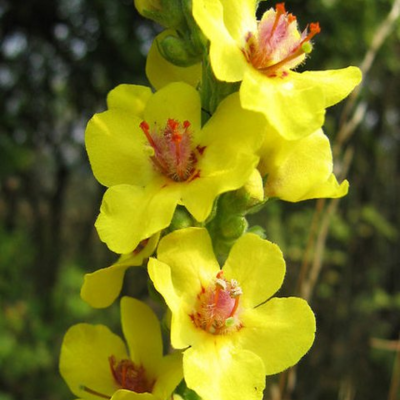

Plants for Pollinators highlights plants selected by the RHS as scientifically proven to tackle the declines in bees, butterflies and other pollinators.
This five-petalled flower's buttery yellow beauty is of a similar, cheery style to that of the daffodil, but its hairy, ruby-red anthems enriches its beauty further, giving it a strong, eye-catching effect. Alongside its fuzzy foliage, this is an ideal plant to place in a herbaceous border, for spikes of striking beauty!
- Type: Perennial
- Height: 15-45cm.
- Flowers: June-September
- Soil Requirement: Well-Drained
- Light Requirement: Full sun
- Natural Habitat: Road verges, hedgerows
- Also known as: Black-Rooted Mullein, Tall Mullein
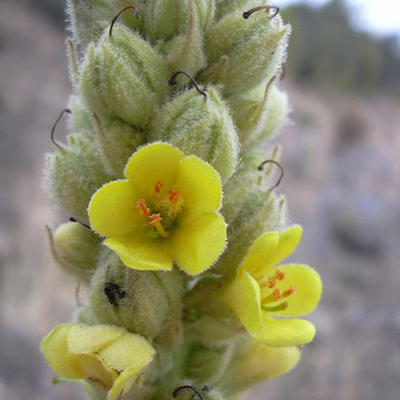

Plants for Pollinators highlights plants selected by the RHS as scientifically proven to tackle the declines in bees, butterflies and other pollinators.
The Great Mullein bears tall spires of soft, silvery leaves which spiral around the stem. In fact, this plant’s super-soft, hairy texture is just as well-known as the dense clusters of miniature pale-gold flowers it produces. Throughout history this plant’s seen a variety of uses, and in the garden it benefits bees and butterflies greatly, with some species of bees using its silvery ‘hair’ to build their homes. A friendly flower which helps the wildlife and adds a uniquely bright splash of colour to the backs of borders.
- Type: Biennial
- Height: 100-180cm.
- Flowers: July-September
- Soil Requirement: Well-drained
- Light Requirement: Full sun
- Natural Habitat: Woodland margins, clearings, waste grounds
- Also known as: Aaron’s Rod, Feltwort, Velvet Plant
Growing tall, slender stems with flowers climbing up the stalk, the Moth Mullein’s subtle beauty comes in a variety of colours: petals are often white, tinted with pale pink or lemon yellow. Much like its namesake, it enjoys a place in bright light where its bright blooms can really glow- and it’s not picky about soil conditions, making it ideal for borders or rockeries.
- Type: Biennial
- Height: 60-100cm.
- Flowers: June-September
- Soil Requirement: Well-drained
- Light Requirement: Full sun
- Natural Habitat: Woodland margins, clearings, waste grounds
- Also known as: Shepherd’s Club, Slippery Mullein, Woolly Mullein
A famous subject mentioned in Shakespearian stageplay, this lovely, hardy and hearty flower truly is the perfect colour of a midsummer night’s dream, with heart-shaped white or yellow petals stained purple in the centre, supposedly from being hit by one of Cupid’s arrows. The unique, whiskery patterns on each pansy are easy to fall in love with, and make for a spellbinding spectacle when scattered in borders or rockeries.
- Type: Annual
- Height: 15-30cm.
- Flowers: April-June
- Soil Requirement: Moist but well-drained
- Light Requirement: Full sun
- Natural Habitat: Grasslands, dry meadows, rocky outcrops
- Also known as: Cupid’s Flower, Heartsease, Love-In-Idleness
Unique lilac flowers that emit a very strong fragrance of spearmint when crushed that's commonly used in aromatherapy. This species has been known to be used in herbal medicine as an insect repellent and antiseptic.
- Type: Perennial
- Height: 10-25cm
- Flowers: August onwards
- Soil requirement: Damp
- Light requirement: Full sun or partial shade
- Natural habitat: Grassland, meadows, roadsides
- Also known as: Pennyrile, Squaw Mint, Mosquito Plant, Pudding Grass
This grass-like plant produces dense spikes of greenish florets, which later display long, lilac stamens that provide this otherwise-prickly plantain with a soft and ribbony appearance. A real gift to your garden that’s perfect for pollinators, and also provides a sweet scent like vanilla. Well-suited to meadows.
- Type: Perennial
- Height: 30-45cm.
- Flowers: May-August
- Soil Requirement: Well-drained, chalky
- Light Requirement: Full sun
- Natural Habitat: Grasslands, pastures, roadsides
- Also known as: Fire Leaves, Healing Herb, Kemps
True nature-lovers can give little bit back to nature with this rugged and robust meadow plant. The cream-coloured anthers that give colour to the Ribwort Plantain's spikes of sharp umber petals also serve as a vital food source for pollinators and other animals. A good addition to meadows that's easy to naturalise.
- Type: Perennial
- Height: 60-90cm.
- Flowers: April-September
- Soil Requirement: Well-Drained
- Light Requirement: Full or partial shade
- Natural Habitat: Grasslands, roadsides
- Also known as: Black Jack, Hen Plant, Ribgrass

Plants for Pollinators highlights plants selected by the RHS as scientifically proven to tackle the declines in bees, butterflies and other pollinators.
So-named for its feathery, forked flowers in flamingo pink, we recommend these raggedy riches for a lot of reasons. Planted in a marshy spot, these bright bursts of streaming pink petals will help to bring in bees and butterflies!
- Type: Perennial
- Height: 30-60cm.
- Flowers: May-July
- Soil Requirement: Moist
- Light Requirement: Full sun or partial shade
- Natural Habitat: Woodland, wetlands
- Also known as: Cuckoo Hood, Meadow Pink, Wild William
The lilac-pink bracts of the Clary Sage certainly are a sight for sore eyes! Not only that, but its heart-shaped foliage is famously aromatic to the point where it’s frequently used in aromatherapy, along other medicinal uses the herb’s seen throughout the years.
- Type: Biennial
- Height: 60-100cm.
- Flowers: March-September
- Soil Requirement: Well-drained
- Light Requirement: Full sun
- Natural Habitat: Grassland, coastal areas
- Also known as: Clear-Eye, See-Bright
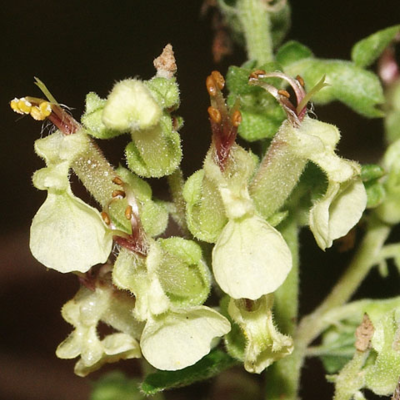

Plants for Pollinators highlights plants selected by the RHS as scientifically proven to tackle the declines in bees, butterflies and other pollinators.
Though the Wood Sage’s crinkly foliage has a more subtle scent than some of its cousins, this sublime specimen has n unusual beauty, bearing dark burgundy stems and stamens contrasted by cream-coloured petals with a large lower lip, making it look like a spoonful of sugar- and it’s sure to add that little extra bit of sweetness to stone gardens and hedgerows.
- Type: Perennial
- Height: 30–50cm.
- Flowers: July-September
- Soil Requirement: Well-drained
- Light Requirement: Partial shade
- Natural Habitat: Woodland, heathland, coasts
- Also known as: Garlic Sage, Hind Heal
These upright spikes of nectar-rich, stripey fuchsia flowers are your best bet for a bloom that’s beneficial to the wildlife of your wild meadow- it’s best grown with grasses to balance out both plants and best show off its vivid colouration!
- Type: Perennial
- Height: 40–50cm.
- Flowers: July-September
- Soil Requirement: Well-drained, chalky
- Light Requirement: Full Sun
- Natural Habitat: Meadows, Foot Paths
- Also known as: Esparsette, French Grass, Holy Clover

Plants for Pollinators highlights plants selected by the RHS as scientifically proven to tackle the declines in bees, butterflies and other pollinators.
This dainty-looking globe flower produces an intricate pattern of bluish-lilac petals: the innermost flower, a soft-looking cluster of miniature florets, is framed by long and papery outer florets! A magical addition to a meadow, especially when mixed with other light-coloured wildflowers.
- Type: Perennial
- Height: 30–90cm.
- Flowers: July-September
- Soil Requirement: Well-drained
- Light Requirement: Full sun
- Natural Habitat: Grasslands, verges
- Also known as: Black Soap, Egyptian Rose, Lady’s Cushion
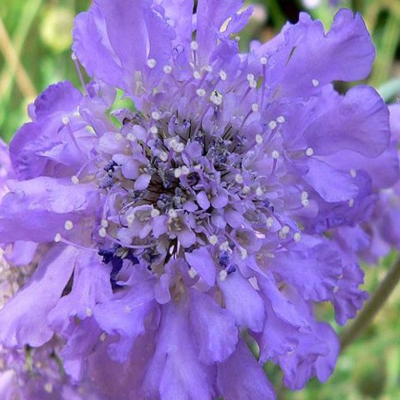

Plants for Pollinators highlights plants selected by the RHS as scientifically proven to tackle the declines in bees, butterflies and other pollinators.
Though smaller than certain other scabious, these compact, cluster-growing flowers are best suited for complimenting beds and borders rather than taking centre stage, whilst still bearing the hardiness and pretty, periwinkle blue florets of its brethren. In fact, the Small Scabious bears five-petalled florets rather than the regular four- sometimes, it’s the little things that matter.
- Type: Perennial
- Height: 60–70cm.
- Flowers: July-August
- Soil Requirement: Well-drained, chalky
- Light Requirement: Full sun
- Natural Habitat: Grasslands, verges
- Also known as: Curl-Doddy, Lilac-Flowered Scabious

Plants for Pollinators highlights plants selected by the RHS as scientifically proven to tackle the declines in bees, butterflies and other pollinators.
This whisical wildflower's short spikes of violet and burgundy beauty are just as pretty as its name! Though it's named for its medicinal uses, we think that there's nothing more rejuvinating than the sight of this multicoloured majesty flooding beds or wild meadows, as it naturalises to any environment and self-seeds readily.
- Type: Perennial
- Height: 20–30cm.
- Flowers: June-September
- Soil Requirement: Well-drained or moist
- Light Requirement: Full sun or partial shade
- Natural Habitat: Grasslands, woodlands
- Also known as: Blue Lucy, Heart of the Earth, Thimble-Flower
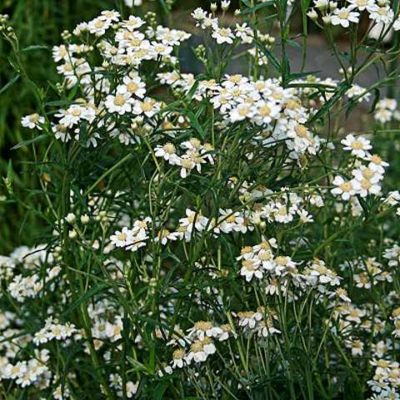

Plants for Pollinators highlights plants selected by the RHS as scientifically proven to tackle the declines in bees, butterflies and other pollinators.
These branches of pearly-white petals, framing fuzzy cream florets, are nothing to sneeze at! Named for its strong scent, its leaves can also be used to repel harmful insects (though it’s still perfect for pollinators), and it’s sometimes used as a herbal remedy. Hardy and drought-resistant.
- Type: Perennial
- Height: 25-50cm.
- Flowers: July-September
- Soil Requirement: Moist but well-drained
- Light Requirement: Full sun or partial shade
- Natural Habitat: Marshes, water margins
- Also known as: Ball Of Snow, Goosetongue, Seven Years’ Love
The subtly sweet-scented Soapwort was named as it can be used to make soap, but its clusters of pristine white and pale pink petals bring to mind a bubble bath, washing up beds and borders as it self-seeds easily. A very useful and hardy herb to have around! Avoid placing near fish ponds.
- Type: Perennial
- Height: 50-70cm.
- Flowers: June-September
- Soil Requirement: Moist but well-drained
- Light Requirement: Full sun
- Natural Habitat: Footpaths, river banks, hedges
- Also known as: Boston Pink, Jill-Run-By-The-Street, World’s Wonder
These spikes of small, scarlet-and-fuschia flowers really spice up a wildmeadow: not only that, they bring in bees and self-seed with little fuss, making them the perfect plant to pepper in! Their attractive arrow-shapes leaves also taste tart when eaten.
- Type: Perennial
- Height: 15–60cm.
- Flowers: May-August
- Soil Requirement: Well-drained
- Light Requirement: Full sun
- Natural Habitat: Grasslands, woodlands, verges
- Also known as: Sour Ducks, Vinegar Plant
A shorter, self-seeding sorrel which bears the same upright, slender stems of scarlet and hot pink petals as its counterparts. Its small but vivid flowers add a lot of flavour to a garden, and perhaps even more flavourful are its sword-shaped basal leaves, which can even be used in making food!
- Type: Perennial
- Height: 7–25cm.
- Flowers: May-August
- Soil Requirement: Well-drained, acidic
- Light Requirement: Full sun
- Natural Habitat: Grasslands, woodlands, verges
- Also known as: Sour Weed
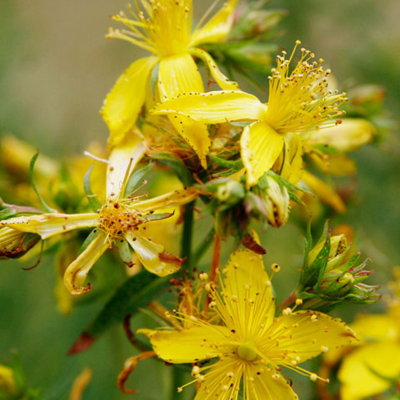

Plants for Pollinators highlights plants selected by the RHS as scientifically proven to tackle the declines in bees, butterflies and other pollinators.
Looking at its golden, star-shaped flowers and showoffish nectar-rich stamens which are perfect for pollinators, it's no wonder that St John's Wort is famously revered in a variety of religions and myths- even today it's highly valued in herbalism! A great plant to grow for a gorgeous golden glow.
- Type: Perennial
- Height: 30–60cm.
- Flowers: June-September
- Soil Requirement: Moist but well-drained
- Light Requirement: Full sun or partial shade
- Natural Habitat: River banks, meadows, hedgerows
- Also known as: Cammock, Devil’s Scourge, Rosin Rose
Distinguished by its namesake hairy leaves and stem as well as the peppered dark gland across their sepals, this specific specie of St. John’s Wort grows taller and with larger, pale-yellow flowers in clustered spikes. A fickle flower that prefers sunny, calciferous soils unlike the common St. John’s Wort, but a garden or grove decorated with these glorious golden-petalled pillars is a rich enough reward.
- Type: Perennial
- Height: 60-100cm.
- Flowers: July-August
- Soil Requirement: Moist but well-drained
- Light Requirement: Full sun
- Natural Habitat: Open forests, damp grasslands
Choosing different wildflower plants by species gives you complete control over when you plant them, where you plant them and what the end result will be. And buying wildflower plug plants instead of seeds, means that you don't have to wait for them to germinate - perfect if speed is of the essence!
The full range of over 100 British wildflower plants species from Boston Seeds is available to buy online in trays of 25, 150 and 500 plug plants and all are available with nationwide delivery.
Want to learn more about the likes and dislikes of your favourite wildflower plants? Our handy wildflower species quide will tell you all you need to know - yours to download and keep for FREE.
Buy With Confidence

